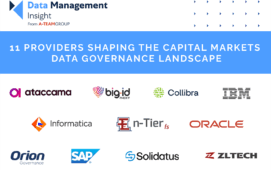
Recent stress tests of European financial institutions’ resilience to climate change have underlined the importance that high-quality data will play in fortifying banks, insurers and other organisations against the risk of transition and environmental losses.
The region’s three financial regulators and the European Central Bank said that the results of their one-off “Fit-for-55” analysis found that the financial system would probably survive the most likely climate scenarios under its present risk management policies. However, the story would be different if environmental shocks coincided with macroeconomic surprises.
“When transition risks are combined with macroeconomic shocks, they can increase losses for financial institutions and may lead to disruptions,” the executive summary of the stress test’s report stated. “This calls for a coordinated policy approach to financing the green transition and the need for financial institutions to integrate climate risks into their risk management in a comprehensive and timely manner.”
Vigilance
To achieve these recommendations, however, institutions will necessarily be expected to rely on good quality climate and risk data. But given that the report’s authors admitted that the data available for the study meant their conclusions were subject to uncertainty, experts have said that institutions will need to be extra-vigilant in their data processes to ensure they are able to prepare for the worst.
“These results should be a wake-up call to insurers and pension funds who could see their investment values drop substantially under these stress scenarios, in large part due to their reliance on long-term investments,” Cédric Cajet, product director at data management provider NeoXam, told Data Management Insight. “Discerning climate-related risks is a notoriously difficult task. At the heart of the issue lies the fact that the accuracy, consistency, and quality of climate-related data is continually evolving, with the data arriving in many different forms, and from a plethora of different suppliers.”
Risk Scenarios
The EU report, compiled from the findings of the ECB and The European Supervisory Authorities, which comprise the European Banking Authority, the European Insurance and Occupational Pensions Authority and the European Securities and Markets Authority, examined institutions’ preparedness for three scenarios.
Under the baseline outcome, which anticipates a 55 per cent reduction in carbon emissions by 2030 and net-zero by 2050, organisations would face costs only related to the transition. Under the least-worst adverse scenario, in which investors shed carbon-intensive stocks – or a “run-on-brown” – the transition would be hampered because these companies would be unable finance their green activities. The most extreme adverse scenario would see more of the same but compounded by macro-economic stress factors.
Under the adverse scenarios, losses in addition to those associated with the transition would run from 5.2 per cent to 21.5 per cent, the latter resulting from successive rounds of shocks.
The report states that under the worst-case scenario, organisations could just about mitigate losses, indicating that organisations have been shoring up their defences. This was borne out by a recent survey by Swiss markets operator and data vendor SIX, which found that senior executives were prioritising ESG data spend in their coming investment plans.
Advanced Data
SIX head of ESG product strategy Martina Macpherson, said that the findings of the company’s Future of Finance report also noted that climate risk was cited as investment banks’ main external challenge in the next three years.
“To counter this challenge, banks need more advanced climate data and analytical monitoring and reporting solutions, specifically ones that can identify, map and manage associated climate risks in line with EU regulatory regimes,” Macpherson told Data Management Insight. “This is the kind of action that is called for, given the EBA’s view that a comprehensive integration of climate risks and scenarios into overall risk management practices is essential.”
NeoXam’s Cajet agreed, saying that the necessary data tools are already available to institutions.
“The key takeaway for these firms should be a commitment to integrating data-driven risk management practices, by adopting modern data infrastructures that can help to provide a comprehensive understanding of the potential climate-related impacts on their portfolios,” he said.
Subscribe to our newsletter




